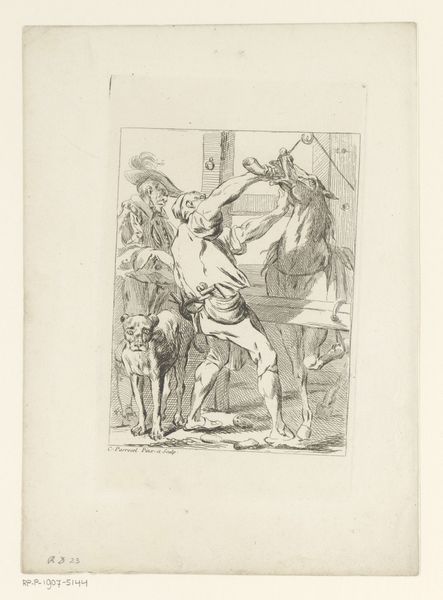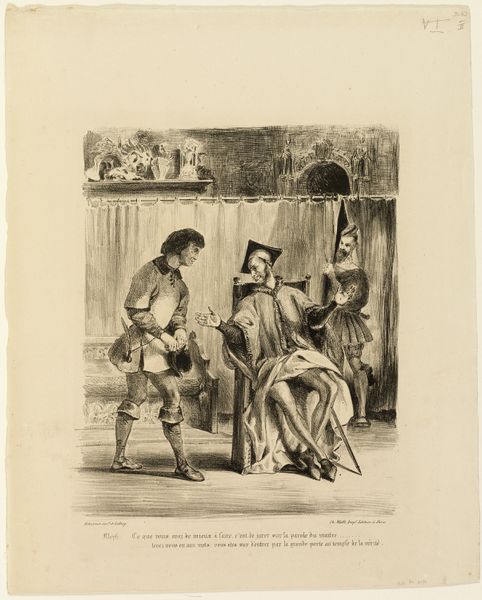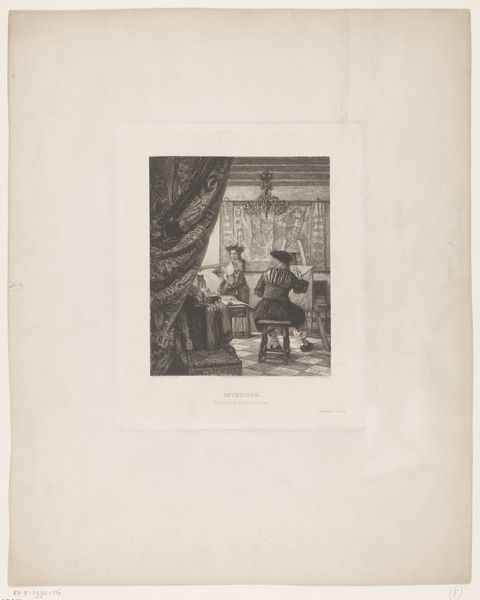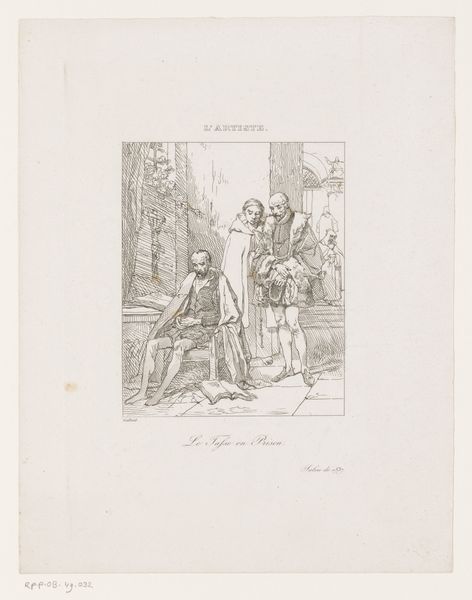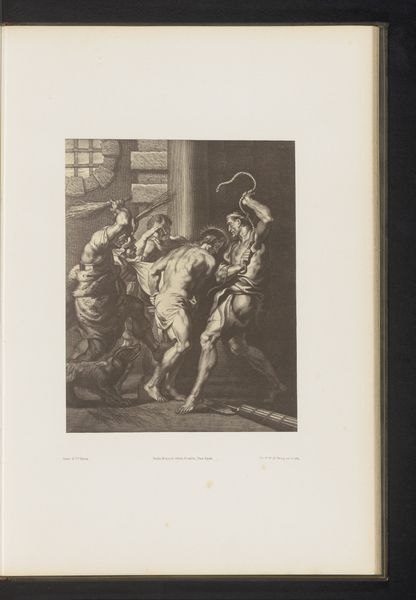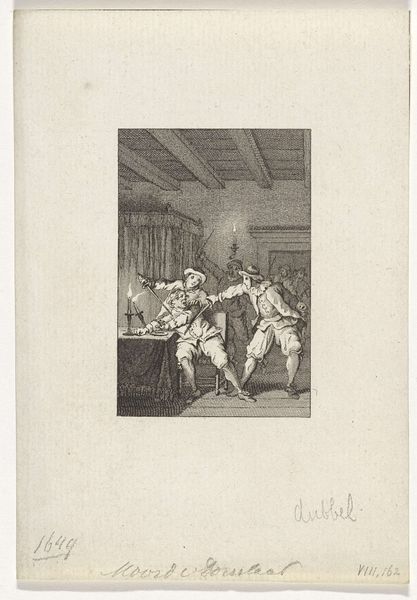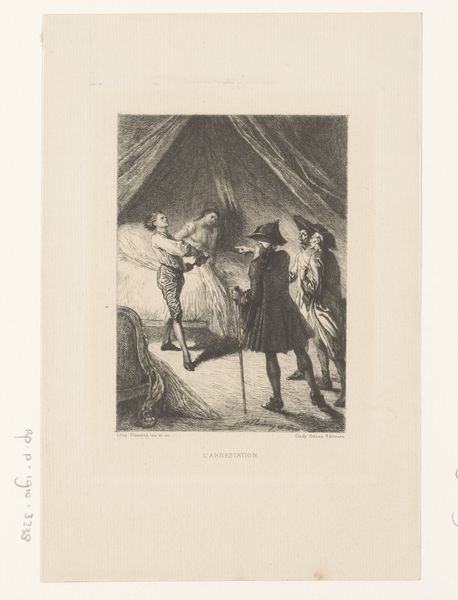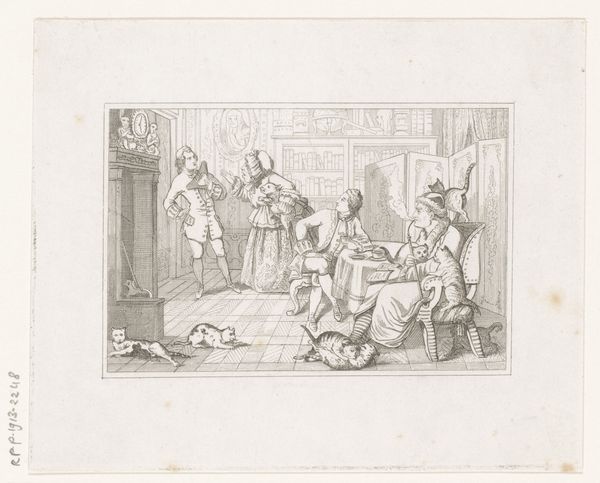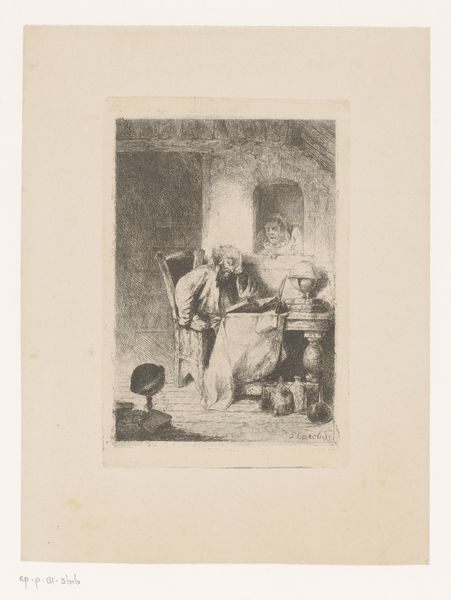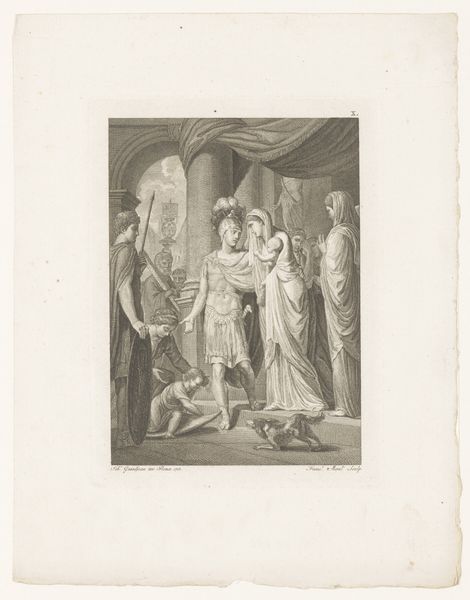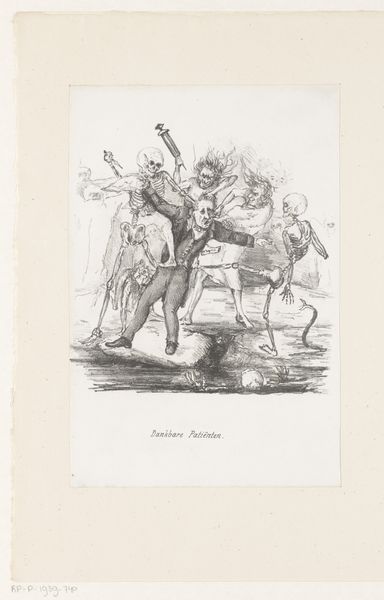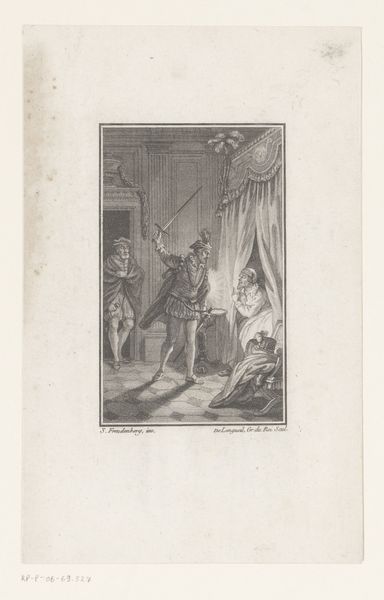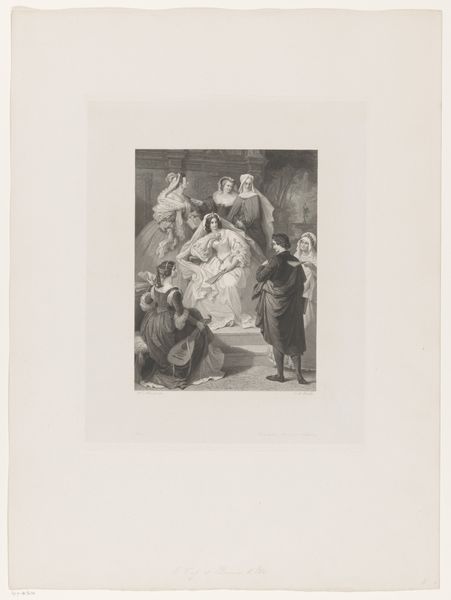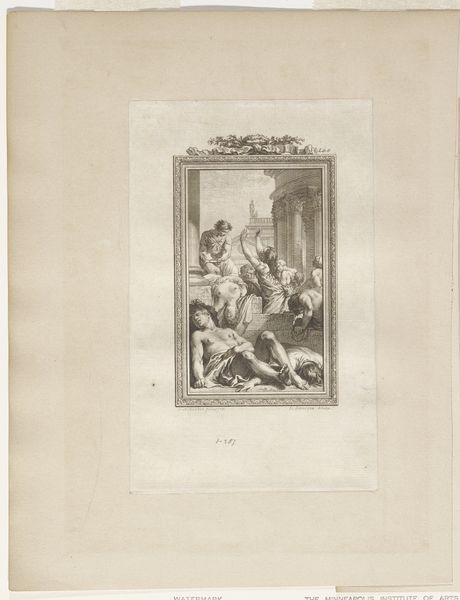
drawing, lithograph, print, paper, ink
#
portrait
#
drawing
#
lithograph
# print
#
paper
#
ink
#
ink drawing experimentation
#
romanticism
#
history-painting
Dimensions: 280 × 208 mm (image); 565 × 400 mm (sheet)
Copyright: Public Domain
Curator: The atmosphere is quite heavy, don't you think? There's a stillness in the poses and the way the figures seem enclosed, despite the presence of three individuals. Editor: This lithograph by Eugène Delacroix, titled *Weislingen Held Prisoner by Goetz*, was created around 1821, and as the title suggests, portrays a scene of imprisonment. Notice the use of ink on paper—a medium often associated with accessibility, due to the comparatively low cost. Curator: Accessibility? How does that tie into the Romantic style? Delacroix usually depicts grand narratives, yet here, we have what seems like a quiet moment. Is he critiquing heroism? Editor: Perhaps not critiquing it directly, but certainly deconstructing the very idea. Think about who these "heroes" really are: they are products of their time, shaped by systems of power and inequality. A materialist reading might note that even a Romantic hero is a commodity produced within a specific social and economic structure. This lithograph served as reproducible, distributed work to disseminate this story and vision. Curator: Interesting. You know, when I look at the process here, particularly the way the light catches on the fabric, I am drawn to Delacroix's deliberate choices with the ink washes. You can almost feel the weight and texture of the material in his rendering of the prisoner's clothing, which contrast sharply with that standing figure on the right. Editor: That standing figure might symbolize the female figure's limited role in a patriarchal society. Confined to a domestic space, observe her subdued expression, and her distance from the two men who seemingly command this situation. Curator: A reminder, too, of the domestic labor involved in keeping prisoners—sewing clothes and cleaning linens. The work to keep the whole machine of the imprisonment running, in more ways than one. Editor: Precisely! The prison's literal confinement and social captivity extends to other people, not just those we'd deem incarcerated. It offers a glimpse into how Romanticism, when viewed through a critical lens, can expose hidden social dynamics. Curator: I do enjoy that he still leaves a rough quality, doesn't clean up every preliminary mark? The marks at the right give an interesting transparency into process. So, looking beyond the apparent stoicism and masculine ideals, this print may be much more multifaceted and, well, maybe less "heroic" than it initially appears. Editor: A nuanced narrative of imprisonment and social confines, visualized with compelling texture. It really shows the many ways artwork can prompt deeper thought about power, access, and how materials circulate.
Comments
No comments
Be the first to comment and join the conversation on the ultimate creative platform.
